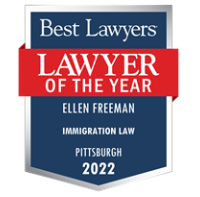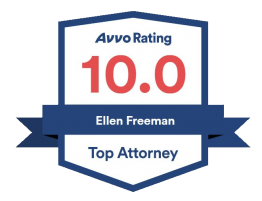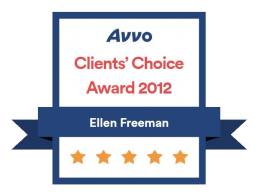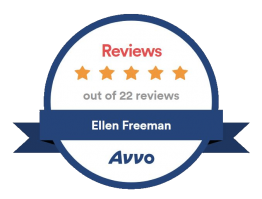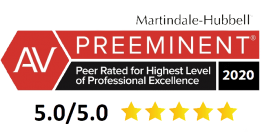One option for sponsoring an employee for lawful permanent residence in the U.S. is through obtaining permanent a labor certification (“LC”) from the U.S. Department of Labor (“DOL”) This is a time-consuming regulatory compliance process with very specific requirements and deadlines. An approved LC is a determination by DOL that the employer has proven, after a comprehensive recruitment and interview process, that there are no minimally qualified U.S. workers available, interested, and willing to take the job as offered.
In 2005, the DOL changed the processing of LCs to the current PERM (Program Electronic Review Management) system. The change was designed to streamline what had been an extremely complicated state and local-based process, as well as equalize and reduce the overall time needed to obtain an approved LC. Before the change, DOL and the related state agencies were involved in every step of the process but did not have the resources to timely process each LC. As a result, the processing times for LCs grew longer eventually taking a couple of years.
Under the PERM program, the employer is required to complete all the recruitment without any involvement by the DOL, except for the prevailing wage determination (“PWD”) mentioned below. After completion of the recruitment process, the employer prepares a form listing its recruitment efforts and attesting that it found no qualified U.S. workers for the job.
To ensure quality control, DOL selectively chooses to audit some of the LCs. That means that it reviews the employer’s recruitment process and, at times, requests the resumes of people who applied for the position. In one exception to the usual process of the employer handling the recruitment on its own, DOL sometimes requires employers to go through what is called Supervised Recruitment. It resembles the former state-driven process and involves DOL instructing the employer when and where to advertise and then serving as the intermediary to receive resumes of candidates.
Step One: Employer Preparation
In the initial step, the employer must develop the job description and minimum requirements, decide the recruitment steps, and address any potential issues. This can be more complex than it might sound. This initial step usually takes employers a month or two. The foreign national employee should not drive the process. Rather, it should handled by HR and the employee’s manager who is familiar with the job and its requirements. When preparing the minimum job requirements and listing job duties, the employer should look at the future position, the one which the employee WILL occupy WHEN they become the lawful permanent resident of the U.S. It may be the same position which the employee holds now or it may be the next level promotion.
Step Two: Employer Obtains Prevailing Wage Determination From DOL
Once the initial planning step is complete, employers will typically request a prevailing wage determination (“PWD”) from DOL through their Foreign Labor Application Gateway (“FLAG”) web site. It may take as long as six (6) months for the PWD to be issued which must be taken into consideration before moving forward with next steps.
It is usually beneficial for employers to wait for the PWD and resolve any wage issues prior to beginning recruitment, but it is not required. If the LC must be filed as soon as possible, the employer may want to move forward with the recruitment process before the DOL issues the PWD provided the employer is certain that will have no issues meeting a PWD which may be higher than the employee’s current salary.
Should the employer choose to move forward with recruitment efforts before obtaining a PWD, it cannot file the LC until receiving the PWD–and must file the LC before the recruitment efforts expire.
Step Three: Employer Conducts Recruitment
Once the employer begins recruitment, it has between 61 and 179 days to file the LC. In addition, prior to filing the LC, the employer must allow for a 30-day “cooling off” period, during which time it must post no job notices, nor conduct any recruitment except for one of three “additional” recruitment steps. It must be pointed out that the DOL still requires recruitment in a newspaper of general circulation in the area of employment (or at the location of the headquarters in a case of work from home) on two Sundays. The Sunday print ads are very expensive and should be placed after a careful consideration to avoid needing another posting.
Thus, if the employer wants to file the LC within 61 days, it must post all job notices and complete almost all recruitment within the first 30 days. If the employer receives a large number of responses and/or needs to further screen potential job applicants to determine whether any are qualified, the process could take longer. The employer might also need to delay the filing, or even restart it, if it finds qualified workers or experiences a layoff for the same occupational classification as the one held by the sponsored employee.
Step Five: Employer Files Labor Certification
Once the employer has completed recruitment efforts and waited out the 30-day cooling-off period, it can file the LC. To do so, the employer must be registered with the federal DOL and have an attorney designated as their counsel. Within 30 days of the filing of the LC and, preferably, as soon as possible, the employer has to respond to the DOL’s email correspondence and attest to the availability of the position and an authorization granted to its counsel to file the LC. The employer must retain proof of all recruitment efforts for five (5) years in an Audit File.
Step Six: DOL Makes a Decision on Labor Certification
DOL processes LCs in the order it received them (FIFO). Its processing involves approving, denying, or auditing the LC. It currently takes approximately six (6) months to hear back from the DOL.
Possible Step Seven: Dealing with DOL Audit or Denial
If DOL decides to audit (request to review additional information related to the information on the LC, typically information related to the recruitment process and see all recruitment efforts and the applications received in response) the LC, it will give the employer only thirty (30) days in which to respond. The processing of an audit response can take several months.
Final Steps: the I-140 and the I-485
For the employee to obtain lawful permanent residence status or “green card,” two additional steps are required following a successful labor certification application: preference/immigrant visa petition (Form I-140) and application for adjustment of status (Form I-485). Future hires working abroad may pursue consular processing of immigrant visa through the U.S. Department of State (“DOS) and a U.S. consular mission in a place of adjustment of status applications.
Preference Petition (Form I-140) is the employer’s petition to U.S. Citizenship and Immigration Services (‘USCIS”) confirming the offer of employment to the employee as described in the LC. This can be filed immediately after receipt of the certified LC. This petition can be filed through regular or premium processing. While regular processing can take many months, premium processing petition with be reviewed by the USCIS in 15 days. Premium processing fee is currently $2,500 and can be paid by either employee or employer. Regular filing fee necessary for every Form I-140 is $700. As part of the preference petition the employer must establish the ability to pay the employee’s salary. The employee must document that they have met all of the requirements for the position.
There are limits to the number of permanent residency applications that can be approved each year based on category, as well as country of birth. As a result, in some cases, the employee must wait years to file the final step, the adjustment of status application (Form I-485). To know when to file Form I-485, one must reference Visa Bulletin, a monthly on line publication of the DOS. In most cases, options will be available to extend their nonimmigrant status to allow them to continue working for the employer until they can file for the final step in the permanent residency process. We will provide more guidance for that process when time comes.


